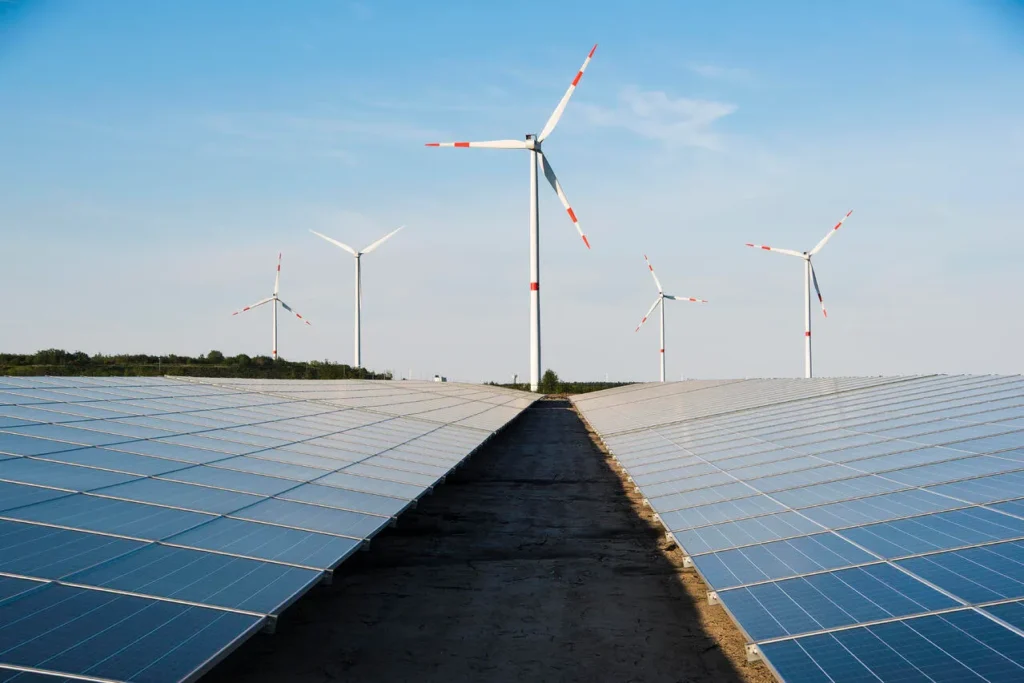Electricity is unequivocally the lifeblood of today’s hyper-digital world. We are so tethered to “always-on” devices that a momentary disruption in electricity grids will upend our lives and livelihoods. So, where does this leave remote, rural areas in MEA, where electricity supply continues to be erratic, intermittent, and still a luxury?
Grid connectivity is a purported solution to address the lack of “dispatchability” in the regional power infrastructure and provide more access. However, grids in their conventional form are riddled with social, economic, and environmental challenges.
For starters, conventional grids are largely centralized, deriving power from plants driven primarily by thermal sources. So, electricity production is energy- and carbon-intensive; thus, detrimental to the sustainability imperative. A study(1) on East Africa found that a grid electricity scenario with higher penetration of renewables can be 4.4% cheaper and 46% less carbon-intensive. However, replacing the existing thermal power plants with renewable alternatives is not feasible financially. Such complex conditions are propelling forward-thinking stakeholders toward microgrids. As a result, revenue from microgrids in MEA(2) is expected to reach $8.9 billion by 2031.
The answer we may be looking for is Microgrids – which are uniquely positioned at the intersection of electric and digital — in line with the principle of “Electricity 4.0”, which posits a sustainable and resilient value-chain, from renewables-led production to transparent and equitable access to rural communities.

Microgrids and their viability in MEA
A microgrid is a self-contained electricity network capable of generating power on-site through different sources. It leverages distributed energy resources (DERs) to optimize costs, advance sustainability, and enhance resilience, especially in the context of remote areas.
When the main grids are disrupted, microgrids serve as the makeshift power source due to their bidirectional flows, ensuring operational continuity and a steady supply of electricity. The high digitalization of microgrids helps identify potential risks to the infrastructure, allows proactive remedial actions, and leads to optimized energy usage, costs, and labour.
These capabilities make microgrids a compelling case for adoption in MEA, which is prone to climatic and “dispatchability” challenges. Its viability in MEA can be enumerated further as follows.
Digitization
Novel solutions such as EcoStruxure Microgrids with IoT-led integration, EcoStruxure Microgrids allow remote and real-time monitoring, which helps operators to proactively address issues and optimize processes. The MEA region, particularly the Middle East, lends itself well to microgrid implementation due to exemplary digitalization and internet penetration (about 99% in some countries).
Decentralization
Centralized grids in MEA can be linked to a lack of access to electricity in rural areas. Whenever main grids get affected by natural calamities, the supply to remote areas is disrupted. The resulting downtime has several ramifications. Microgrids, on the other hand, are decentralized; they rely on distributed resources in the absence of main grids. These grids represent the “democratization” of electricity, levelling the playing field between urban and rural areas.
Decarbonization
The MEA region has renewable energy resources in abundance. Its solar irradiance levels, for example, are the highest in the world. Wind and hydroelectric energy, too, hold immense potential. Such renewable sources can be integrated into the microgrids as part of DERs. The integration will cumulatively contribute to the decarbonization of electricity and increase renewables in the energy mix. As per Schneider Electric’s projections(3), a facility can reduce energy consumption by 50% and enable 100% renewables-led production through microgrids-led on-site generation.
Microgrid opportunities in MEA
Ambitious initiatives such as the Eastern Africa Power Pool (EAPP), Nigeria Electrification Project, and West Africa Power Pool have immense potential for microgrid deployments. Integrated with such large-scale projects, microgrids can enable policymakers to harness renewable energy at a magnitude that has not been attempted so far. Moreover, the social and macroeconomic implications of the resulting reliable power supply are profound.
Several studies have linked low literacy rates and maternal and perinatal mortality in MEA to unreliable power supply. Under that scenario, microgrids can empower remote and rural communities, where such ill effects are more pronounced.
However, high-upfront costs have hindered potential adopters from embracing these technologies. In consideration of such hindrances, Schneider began offering EcoStruxure Microgrids through an “Energy as a Service” model without charging upfront capital. The flex business model has been a game-changer for businesses and communities geared toward energy security, savings, sustainability, and future readiness.
Going forward, the collaboration between governments, private sector entities, and underserved communities will be key in defining the uptake of microgrids. Top-down undertakings from governments, through regulatory clarity, incentive-based models, and PPPs, will unlock private sector investments and bottom-up interests from individuals. Unlike in most parts of the world, the opportunity for microgrid deployments is there for the taking in MEA due to the abundance of resources. Maximizing these opportunities can turn into an engine of prosperity.
- Pathways to 100% Electrification in East Africa by 2030
- Report says microgrid investments to reach $8B in APAC and $9B in the Middle East and Africa by 2031
- Schneider Electric Leads The Charge On The Democratization Of Energy


